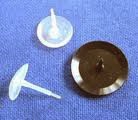Recently my repair area has been really busy. Good divers
want to make sure their gear is well maintained and working well when you need
it. The number one piece of equipment divers want to keep well maintained is
your regulator for obvious life support reasons. It amazes me that from time to
time I will get a regulator in that hasn’t been serviced in years yet the diver
has been diving with it right along. The “if it’s not broke, don’t fix it” idea
just doesn’t fit with regulators. Even
if it hasn’t been used for a couple of years your regulator should be serviced
as o-rings, seats and poppets can dry out and fail when you’re diving. Not the
surprise that I want at 60 ft. So her it goes:
Six things you need
to know about regulator maintenance.
Number 1
Have
your regulator inspected every other year and rebuilt in the years between
inspection years. This is the schedule recommended by most regulator
manufacturers. If a regulator if in a high use situation it’s recommended that
the regulator is serviced more frequently. There are exceptions such as the
Atomic T3 regulator, which requires rebuilding every 3 years or 300 dives. When
your regulator is serviced make sure that the tech uses only manufacturers
parts kits AND that they change all the hose O-rings as well.
Number 2
Manufacturers
don’t require that the tech replace the exhaust vales as part of the rebuild of the second stage and octo. It’s
recommended that the tech inspect them and replace them only if they show signs
of wear or they are leaking. I replace them every time I rebuild, since as with
O-rings, they are made of silicone or rubber and dry out with time.
Number 3
Although
the manufacturers mostly call for the second stage diaphragm to be replaced
only when they are torn or deformed, I replace the diaphragm on every third
rebuild. Again, like the O-rings and the exhaust valve it’s made of silicone
rubber and can dry out and fail. They cost about $12 and I don’t charge
anything to install. That’s $2 a year for peace of mind.
Number 4
More
and more of our divers are using comfort swivels on their second stages and HP
Quick disconnects for their computers. Both of these upgrades have O-rings and
need to be serviced at the same time as your regulator. It shortens your dive
if there is steady stream of bubbles coming from your swivel or QD.
Number 5
What’s
an HP air-spool and why should you be concerned about it? An air spool is a tiny pin between your High
Pressure gauge and your HP hose. It has two little O-rings that seal the
connection. It’s not typically part of the regulator rebuild or the rebuild kit
I change them N/C with every rebuild. It adds security that you won’t have a
blow out and have to miss a dive.
Number 6
Even
if you haven’t done a lot of dives during the year you should change the
battery in your computer at least once a year. Every year and absolutely before
a dive trip. The cost before the trip is less than having to rent a computer
during the trip.
These are the six things to think about on servicing your
regulator. If there was a seventh, I would say don’t wait until the week before
your trip or the beginning of the season to get your regulator in shape.
Mike (mook)






No comments:
Post a Comment